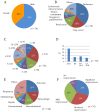Oral Immune-Related Adverse Events Caused by Immune Checkpoint Inhibitors: Salivary Gland Dysfunction and Mucosal Diseases
- PMID: 35159059
- PMCID: PMC8834130
- DOI: 10.3390/cancers14030792
Oral Immune-Related Adverse Events Caused by Immune Checkpoint Inhibitors: Salivary Gland Dysfunction and Mucosal Diseases
Abstract
Conventional chemotherapy and targeted therapies have limited efficacy against advanced head and neck squamous cell carcinoma (HNSCC). The immune checkpoint inhibitors (ICIs) such as antibodies against CTLA-4, PD-1, and PD-L1 interrupt the co-inhibitory pathway of T cells and enhance the ability of CD8+ T cells to destroy tumors. Even in advanced HNSCC patients with recurrent diseases and distant metastasis, ICI therapy shows efficiency and become an effective alternative to conventional chemotherapy. However, as this therapy releases the immune tolerance state, cytotoxic CD8+ T cells can also attack organs and tissues expressing self-antigens that cross-react with tumor antigens and induce immune-related adverse events (irAEs). When patients with HNSCC are treated with ICIs, autoimmune diseases occur in multiple organs including the skin, digestive tract, endocrine system, liver, and respiratory tract. Treatment of various malignancies, including HNSCC, with ICIs may result in the appearance of oral irAEs. In the oral cavity, an oral lichenoid reaction (OLR) and pemphigoid develop. Sicca syndrome also occurs in association with ICIs, affecting the salivary glands to induce xerostomia. It is necessary to elucidate the pathogenic mechanisms of these intractable diseases that are not seen with conventional therapy. Early diagnosis and appropriate approaches to irAEs are needed for efficient treatment of advanced HNSCC by ICIs.
Keywords: Sicca syndrome; cellular and humoral tumor immunity; head and neck squamous cell carcinoma; immune checkpoint inhibitor; immune-related adverse event; oral cavity; oral lichenoid reaction; pemphigoid.
Conflict of interest statement
The authors declare no conflict of interest.
Figures


Similar articles
-
New insight in endocrine-related adverse events associated to immune checkpoint blockade.Best Pract Res Clin Endocrinol Metab. 2020 Jan;34(1):101370. doi: 10.1016/j.beem.2019.101370. Epub 2019 Dec 11. Best Pract Res Clin Endocrinol Metab. 2020. PMID: 31983543 Review.
-
Factors affecting tumor responders and predictive biomarkers of toxicities in cancer patients treated with immune checkpoint inhibitors.Int Immunopharmacol. 2020 Aug;85:106628. doi: 10.1016/j.intimp.2020.106628. Epub 2020 May 28. Int Immunopharmacol. 2020. PMID: 32474388 Review.
-
Haematological immune-related adverse events with immune checkpoint inhibitors, how to manage?Eur J Cancer. 2019 Nov;122:72-90. doi: 10.1016/j.ejca.2019.07.014. Epub 2019 Oct 18. Eur J Cancer. 2019. PMID: 31634647 Review.
-
Microneedle-mediated Intratumoral Delivery of Anti-CTLA-4 Promotes cDC1-dependent Eradication of Oral Squamous Cell Carcinoma with Limited irAEs.Mol Cancer Ther. 2022 Apr 1;21(4):616-624. doi: 10.1158/1535-7163.MCT-21-0234. Mol Cancer Ther. 2022. PMID: 35086958 Free PMC article.
-
Management of endocrine immune-related adverse events of immune checkpoint inhibitors: an updated review.Endocr Connect. 2020 Oct;9(10):R207-R228. doi: 10.1530/EC-20-0342. Endocr Connect. 2020. PMID: 33064663 Free PMC article. Review.
Cited by
-
Efficacy and toxicity of PD-1 inhibitor combined with induction chemotherapy for locally advanced laryngeal and hypopharyngeal cancers.Am J Cancer Res. 2025 May 15;15(5):2193-2207. doi: 10.62347/HVRH6856. eCollection 2025. Am J Cancer Res. 2025. PMID: 40520879 Free PMC article.
-
Rheumatic adverse events of immune checkpoint inhibitors in cancer immunotherapy.Expert Rev Clin Immunol. 2024 Aug;20(8):873-893. doi: 10.1080/1744666X.2024.2323966. Epub 2024 Mar 19. Expert Rev Clin Immunol. 2024. PMID: 38400840 Free PMC article. Review.
-
Guidance on mucositis assessment from the MASCC Mucositis Study Group and ISOO: an international Delphi study.EClinicalMedicine. 2024 Jun 6;73:102675. doi: 10.1016/j.eclinm.2024.102675. eCollection 2024 Jul. EClinicalMedicine. 2024. PMID: 38933098 Free PMC article.
-
Outline of Salivary Gland Pathogenesis of Sjögren's Syndrome and Current Therapeutic Approaches.Int J Mol Sci. 2023 Jul 6;24(13):11179. doi: 10.3390/ijms241311179. Int J Mol Sci. 2023. PMID: 37446355 Free PMC article. Review.
-
Abscopal effect: from a rare phenomenon to a new frontier in cancer therapy.Biomark Res. 2024 Sep 4;12(1):98. doi: 10.1186/s40364-024-00628-3. Biomark Res. 2024. PMID: 39228005 Free PMC article. Review.
References
-
- Jakobi A., Lühr A., Stützer K., Bandurska-Luque A., Löck S., Krause M., Baumann M., Perrin R., Richter C. Increase in Tumor Control and Normal Tissue Complication Probabilities in Advanced Head-and-Neck Cancer for Dose-Escalated Intensity-Modulated Photon and Proton Therapy. Front. Oncol. 2015;5:256. doi: 10.3389/fonc.2015.00256. - DOI - PMC - PubMed
-
- Yura Y., Tada S., Fujita Y., Hamada M. Current treatment, particle radiotherapy, and boron neutron capture therapy for advanced oral cancer in patients. Oral Sci. Int. 2019;16:49–68. doi: 10.1002/osi2.1014. - DOI
Publication types
LinkOut - more resources
Full Text Sources
Research Materials

